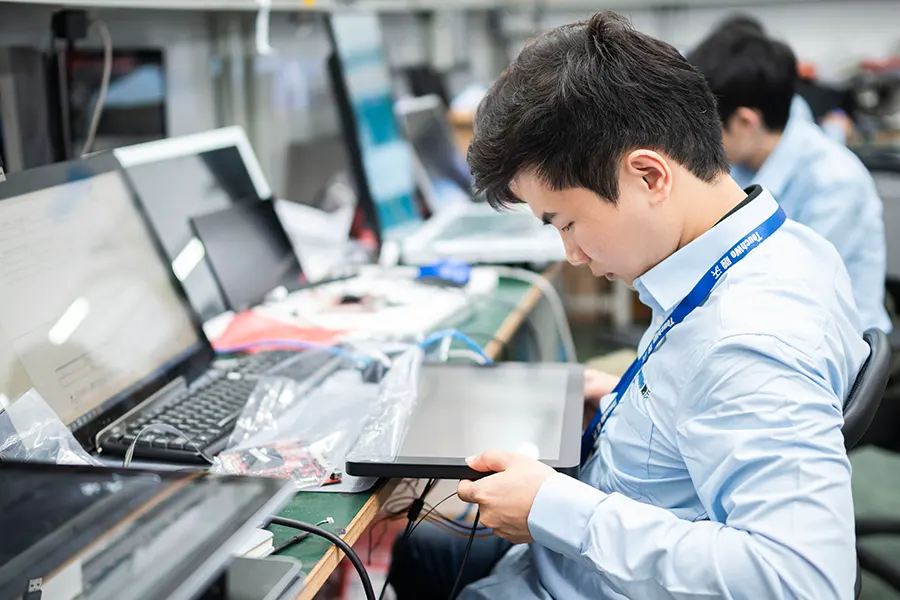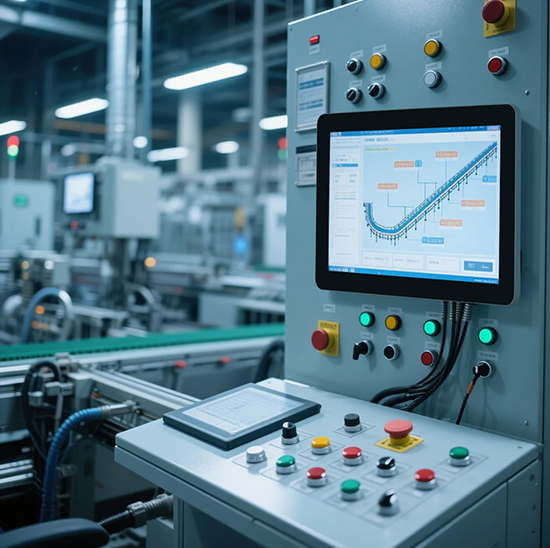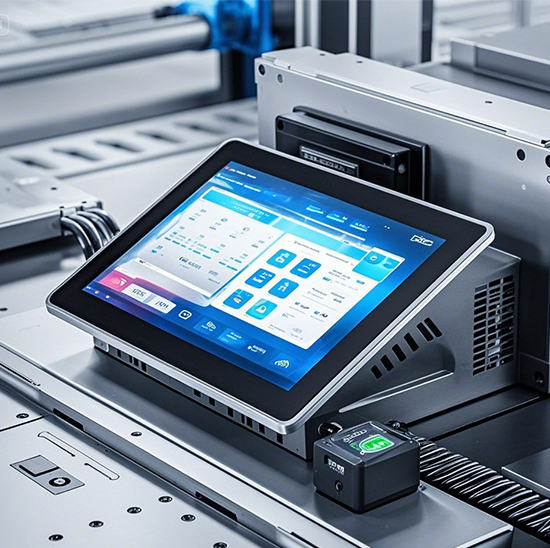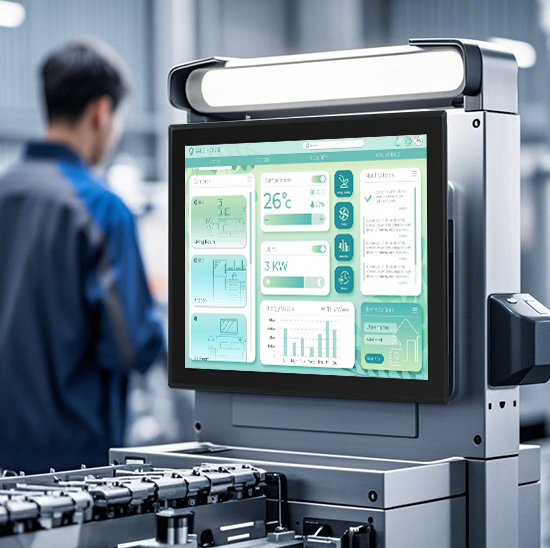Ever found yourself swiping away on your phone or tapping on a tablet without a second thought? If you’ve ever wondered, “What is a touch screen computer?” you’re not alone. That seamless interaction is thanks to touch screen technology, and it’s everywhere now! From our pocket-sized gadgets to hefty desktop computers, touch screens are revolutionizing the way we interact with devices. Let’s dive into the fascinating world of touch screen computers and explore what makes them tick, the different technologies behind them, and how they’re enhancing our lives.

4 Types of Touch Screen Technology
Touch screens aren’t all built the same. Several types of technologies make these interactions possible, each with its unique mechanics and use cases.
Resistive Touch Screens
These are the veterans of touchscreen technology. Resistive touch screens rely on two flexible layers that come into contact when you apply pressure. This contact completes an electrical circuit, pinpointing your touch location. They’re known for their durability and are often used in environments where rough handling is expected.
Capacitive Touch Screens
Chances are, your smartphone uses this type. Capacitive touch screens work by detecting the electrical properties of your finger. They’re super responsive and support multi-touch gestures like pinching and zooming. However, they don’t work with regular gloves, which can be a bummer in cold weather.
Infrared Touch Screens
Infrared touch screens use an array of X and Y axes with infrared LEDs and photodetectors around the edges. When an object touches the screen, it obstructs the infrared light, creating a touchpoint. These screens offer high durability and can detect any input method, whether it’s a finger, gloved hand, or stylus.
Surface Acoustic Wave (SAW) Touch Screens
SAW touch screens use ultrasonic waves that pass over the touch screen surface. When you touch the screen, some of these waves are absorbed, and the system detects the touch. These screens provide excellent image clarity and are highly sensitive, but they can be more prone to damage from contaminants like dust and water.
How Touch Screen Computers Work?
Understanding how touch screen computers work is like peeking under the hood of a high-performance car. It’s all about the synergy between hardware and software.
The Basics of Touch Input
Touch input is fundamentally about detecting and interpreting touch. When you touch the screen, whether it’s tapping, swiping, or pinching, the system records the touch points and translates them into commands.
Hardware Components
The hardware is the backbone of touch technology. It includes the touch sensor, which is the touch-sensitive surface you interact with; the controller, which processes the touch information; and the software drivers, which translate this data into actions the computer can execute.
Software Integration
The magic happens when software meets hardware. Operating systems like Windows, macOS, and Android are designed to support touch inputs, offering an intuitive interface and allowing applications to utilize touch gestures effectively. This integration ensures a smooth and responsive user experience.
5 Benefits of Touch Screen Computers
Why are we so enamored with touch screens? Microsoft has told us before, but now we will tell the perks they bring to our digital lives.
Enhanced User Experience
Touch screens make interactions more intuitive and natural. Whether it’s a child playing an educational game or a professional swiping through a presentation, the direct interaction with content is far more engaging than using a mouse and keyboard.
Increased Productivity
For many, touch screens streamline tasks. Think of architects manipulating 3D models or chefs using digital recipes. The ability to touch, drag, and manipulate elements directly saves time and often reduces the learning curve associated with new software.
Ease of Use
Touch screen interfaces are often easier to use, especially for those who are less familiar with traditional computer setups. The simplicity of tapping icons or swiping through menus can reduce the learning curve for new users, making technology more accessible to children, seniors, and individuals with disabilities.
Space-Saving Design
Many touch screen computers are designed to be compact and integrated, often combining the display and computing unit into one sleek device. This all-in-one design saves space and reduces the clutter of cables and peripherals, making it ideal for small workspaces or home offices.
Versatility in Applications
Touch screen computers are incredibly versatile and can be used in a wide range of settings. In educational environments, they enhance interactive learning experiences. In retail and hospitality, they improve customer service through self-service kiosks and digital menus. In healthcare, touch screens facilitate patient check-ins and access to medical records. The possibilities are virtually endless.
Applications of Touch Screen Computers

Touchscreen computers aren’t just for tech enthusiasts; they have found their way into various facets of our daily lives and industries.
Personal Use
In our homes, touch screens are central to entertainment and smart home control. From tablets for reading and gaming to kitchen displays for recipes and timers, they’ve become indispensable.
Business and Professional Use
Businesses leverage touch screens for enhanced customer interaction. In retail, they serve as point-of-sale systems; in offices, they’re used for collaborative work on interactive whiteboards. They also simplify complex tasks in fields like design and architecture.
Educational Settings
Classrooms are increasingly adopting touch screens for interactive learning. They make lessons more engaging with interactive elements that can cater to various learning styles. Digital whiteboards and touch-enabled tablets are transforming traditional teaching methods.
Public and Commercial Use
In public spaces, touch screens provide information and services efficiently. ATMs, kiosks, and self-service checkouts are just a few examples. They’re designed for ease of use, helping people navigate services quickly and effectively.
Conclusion
So, what is a touch screen computer? It’s more than just a technological trend; it’s a cornerstone of modern interaction with digital devices. Their versatility, ease of use, and ability to enhance both personal and professional productivity make them an essential part of our daily lives. As technology continues to evolve, we can only expect touch screens to become even more integrated into various aspects of our world, making our interactions with technology smoother and more intuitive than ever before.
FAQs
Q1: Can touch screen computers work with gloves?
It depends on the type of touch screen. Resistive touch screens can work with any object, including gloves, while capacitive screens generally require special touchscreen-compatible gloves.
Q2: What is the lifespan of a touch screen computer?
The lifespan varies based on usage and technology. Typically, resistive touch screens can endure heavy use, while capacitive screens are quite durable as well but may suffer from wear and tear over time.
Q3: Are touch screen computers more expensive?
Initially, touch screen computers can be pricier than their non-touch counterparts. However, prices have been decreasing as the technology has become more widespread.
Q4: Do touch screen computers consume more battery?
They can, due to the additional layer of touch sensors and the processing power required. However, advancements in power efficiency have minimized this issue significantly.
Q5: How do I clean a touch screen computer?
Use a soft, lint-free cloth slightly dampened with water or a screen-safe cleaner. Avoid using harsh chemicals or abrasive materials that could damage the screen.



